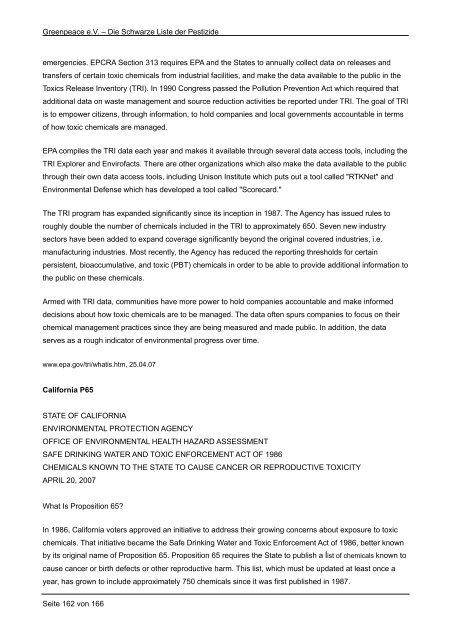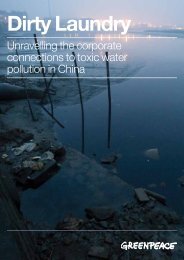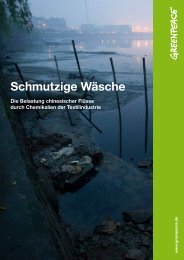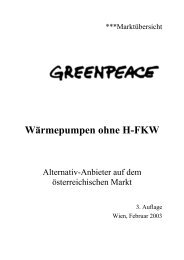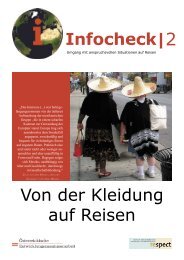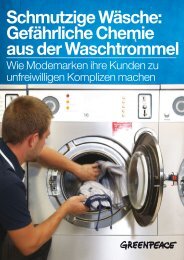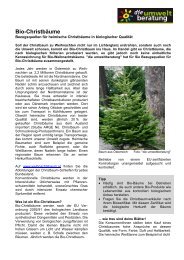Die Schwarze Liste der Pestizide - Greenpeace
Die Schwarze Liste der Pestizide - Greenpeace
Die Schwarze Liste der Pestizide - Greenpeace
Erfolgreiche ePaper selbst erstellen
Machen Sie aus Ihren PDF Publikationen ein blätterbares Flipbook mit unserer einzigartigen Google optimierten e-Paper Software.
<strong>Greenpeace</strong> e.V. – <strong>Die</strong> <strong>Schwarze</strong> <strong>Liste</strong> <strong>der</strong> <strong>Pestizide</strong><br />
emergencies. EPCRA Section 313 requires EPA and the States to annually collect data on releases and<br />
transfers of certain toxic chemicals from industrial facilities, and make the data available to the public in the<br />
Toxics Release Inventory (TRI). In 1990 Congress passed the Pollution Prevention Act which required that<br />
additional data on waste management and source reduction activities be reported un<strong>der</strong> TRI. The goal of TRI<br />
is to empower citizens, through information, to hold companies and local governments accountable in terms<br />
of how toxic chemicals are managed.<br />
EPA compiles the TRI data each year and makes it available through several data access tools, including the<br />
TRI Explorer and Envirofacts. There are other organizations which also make the data available to the public<br />
through their own data access tools, including Unison Institute which puts out a tool called "RTKNet" and<br />
Environmental Defense which has developed a tool called "Scorecard."<br />
The TRI program has expanded significantly since its inception in 1987. The Agency has issued rules to<br />
roughly double the number of chemicals included in the TRI to approximately 650. Seven new industry<br />
sectors have been added to expand coverage significantly beyond the original covered industries, i.e.<br />
manufacturing industries. Most recently, the Agency has reduced the reporting thresholds for certain<br />
persistent, bioaccumulative, and toxic (PBT) chemicals in or<strong>der</strong> to be able to provide additional information to<br />
the public on these chemicals.<br />
Armed with TRI data, communities have more power to hold companies accountable and make informed<br />
decisions about how toxic chemicals are to be managed. The data often spurs companies to focus on their<br />
chemical management practices since they are being measured and made public. In addition, the data<br />
serves as a rough indicator of environmental progress over time.<br />
www.epa.gov/tri/whatis.htm, 25.04.07<br />
California P65<br />
STATE OF CALIFORNIA<br />
ENVIRONMENTAL PROTECTION AGENCY<br />
OFFICE OF ENVIRONMENTAL HEALTH HAZARD ASSESSMENT<br />
SAFE DRINKING WATER AND TOXIC ENFORCEMENT ACT OF 1986<br />
CHEMICALS KNOWN TO THE STATE TO CAUSE CANCER OR REPRODUCTIVE TOXICITY<br />
APRIL 20, 2007<br />
What Is Proposition 65?<br />
In 1986, California voters approved an initiative to address their growing concerns about exposure to toxic<br />
chemicals. That initiative became the Safe Drinking Water and Toxic Enforcement Act of 1986, better known<br />
by its original name of Proposition 65. Proposition 65 requires the State to publish a list of chemicals known to<br />
cause cancer or birth defects or other reproductive harm. This list, which must be updated at least once a<br />
year, has grown to include approximately 750 chemicals since it was first published in 1987.<br />
Seite 162 von 166


